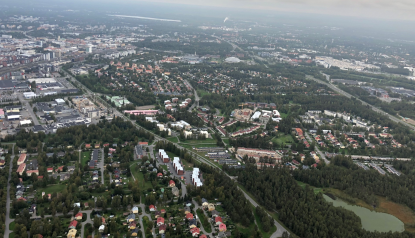6G Being Discussed
Article By : Nitin Dahad, EE Times
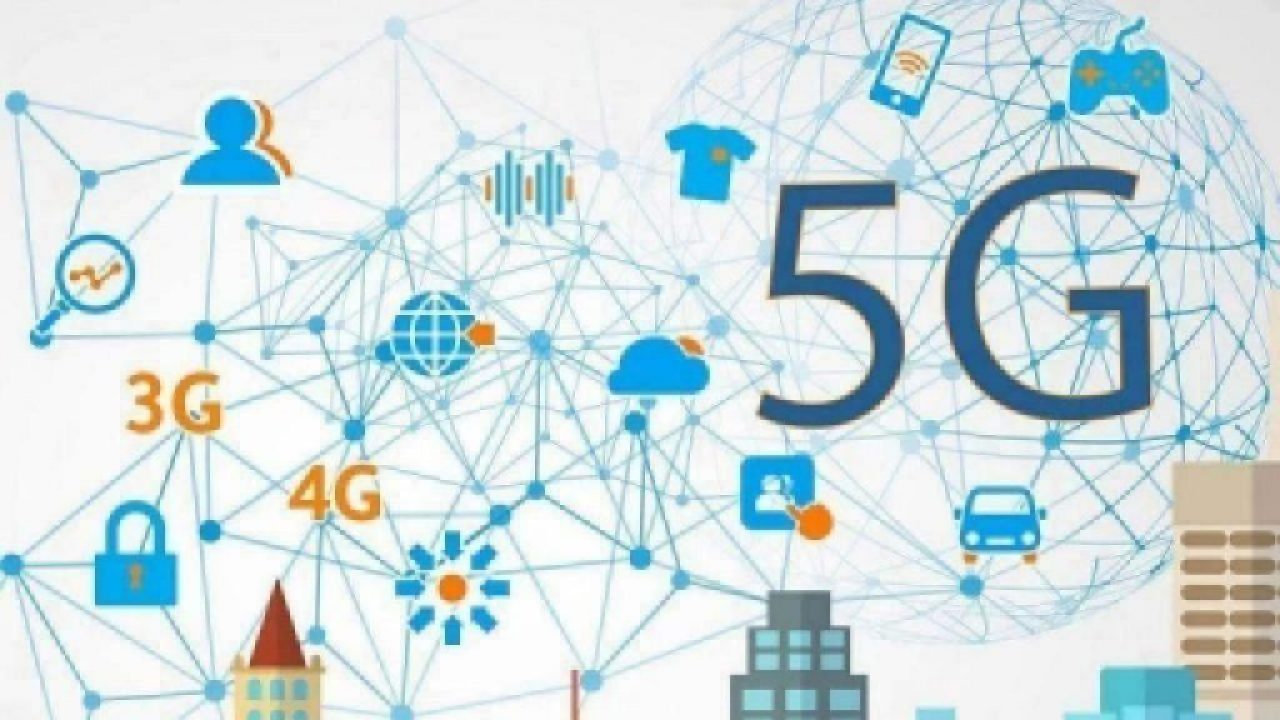
Nitin Dahad travels to the future of networking, which happens to be in rural Finland
When the city of Oulu, Finland, invited a group of journalists to come and have a look at some of the work that they are doing to initiate research on 6G, I (like many I have spoken to) immediately thought, But we don’t even have commercial 5G yet, so how can we be talking about 6G?
But once I got there, I began to realize that it’s just a marker — most of the work going on in Oulu, as in the rest of the world, is in rolling out 5G, carrying out trials, and figuring out business models and use cases. As the head of Nokia’s supply chain told us, it is already shipping millions of its Airscale radio access platform for 5G installations in cities around the world.
However, there needs to be a vision for what’s next in mobile networks beyond what is possible today. It would signify something way out in the future, plus a label that can also help get research funding.
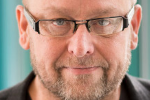
Ari Pouttu, professor for dependable wireless at the University of Oulu’s Center for Wireless Communications, said, “Is it 5G long-term evolution (LTE), or is it 6G?” He said that they reluctantly decided to go for the 6G moniker, and the result is more than €250 million (about $291 million) worth of funding over the next eight years for its flagship 6Genesis project.
The project, “6Genesis — the 6G-Enabled Wireless Smart Society & Ecosystem,” is focused on the development of wireless technology, exploring the implementation of 5G communication technology and the development of a possible 6G standard. Its main aim is to support industry in bringing the 5G standard to the commercialization stage by carrying out large pilots with a test network and to explore development of essential technology components that could be needed for 6G — whatever that might be — targeting areas such as wireless connectivity and distributed intelligent computing. In addition to communication between people, the research will focus on communication between devices, processes and objects.
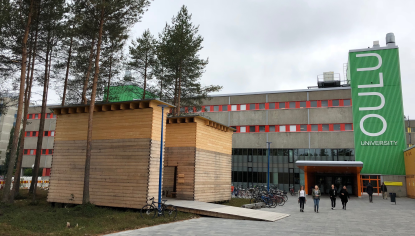
It’s really about the academic world thinking outside of the box and thinking about the vision for 2030. The 6Genesis project is led by the University of Oulu in collaboration with Nokia, the VTT Technical Research Center of Finland, Aalto University, Business Oulu and the Oulu University of Applied Sciences.
Professor Pouttu outlines the program’s vision over the next eight years: to look at the impact of a data-driven society enabled by near-instant, unlimited wireless connectivity. This means looking at the wireless connectivity, the devices and circuits, and the distributed computing requirements that could satisfy the expectation of artificial intelligence (AI)-inspired applications in every field of society with ubiquitous wireless connectivity.
“Humans are already connected, so the promise of 5G or 6G will be to connect even more objects,” Pouttu said. “The near-instant connectivity is still not fully solved in 5G in terms of latency: millisecond latency is not good enough for some [time-critical] applications, so there is still a lot of potential to improve communications capability.”
Pouttu added that as you start needing to handle massive amounts of data, you start getting to terabit/s communications.
When you go up in data rates, you need to go up in frequency — with ranges from 100 GHz all the way up to terahertz frequencies.
“For this, distances will be short, with radios everywhere,” Pouttu said. “We’ll need to start looking at totally new ways of providing over-the-air communications. Could this mean the renaissance of ultra-wide-band radio, or will it be OFDM?”
Pouttu said that there is already a line of thinking that there will be 1,000 radios per person in the next 10 years. As you get into this territory, devices and circuit technology becomes a key topic, and there might also need to be new thinking on materials science.
One of the research areas that the project will be looking at is the mobile edge intelligence that will be needed to meet the needs of more data-driven near-instant connectivity. Distributed computing will become even more important, particularly multi-access mobile edge computing.
“A lot of computing will be done at the edge, with a lot of modelling done in the handheld device itself,” Pouttu said. (A look at the launch of the Apple phones this month shows how that trend is already happening in the A12 bionic chip.)

Aarno Parssinen, a professor of radio engineering at the University of Oulu, said its important to start thinking about the next generation of technology, as technology can take a long time to mature. “Our timeline of development is not in quarters — for us, 10 years is really a short time frame,” he said.
“If you look at millimeter-wave, the first fundamentals might have been done around the 2000 time frame, but industry has really only developed a level of maturity with this 10 to 15 years later,” Parssinen said. “Even so, 5G mmWave is still 10 times more difficult to implement. The same fundamental principles might apply, but the dimensions are getting smaller. The antennas are getting tiny, with more electronics around it, and this will get even more difficult in terahertz communications.”
Parssinen said he also believes that we don’t have the transistors to cope with terahertz frequencies.
In future 5G development and in 6G, Parssinen says that the area of interest will be from 100 GHz to a terahertz. There will be so much frequency available that it can contain an absurd amount of data. Data intensity will not only be increased in information technology but also in terms of its wireless transport.
“We must come up with a solution that makes this reasonable and physically possible in those frequencies,” Parssinen said. “We need to do things that cannot really be done yet. But that is the purpose of science. The goal is to make new things in frequencies that have enabled significant advances in radio astronomy and other scientific or otherwise very demanding applications. Now, the focus is on harnessing this for commercial use in reasonably priced, small devices and how to get the radio signal to travel in this environment.”
So the radios, the electronics and the materials, will be the basis of huge challenges for the project over the next eight years.
But long before 6G is an actual thing, there is also the rollout of 5G. This is also a big part of the work being done within the project. This includes a 5G test network (5GTN) operated by the University of Oulu and VTT, supported by Nokia and its core network products. It has about 25 partners who are also involved in the funding.
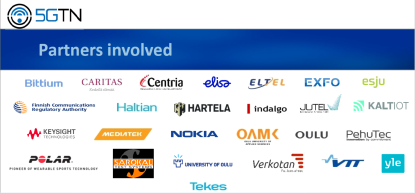
The 5GTN acts as a verification platform for theoretical 5G research and is a test bed for R&D and trials that the partners, ranging from technology to health and public service, can use. The test network is centrally located at the university, and businesses can connect into it using its SIM cards. This enables product developers to test their technology prototypes with access to all functions and interfaces on the network, as well as other businesses who may want to trial services that could benefit from utilizing the 5G network.
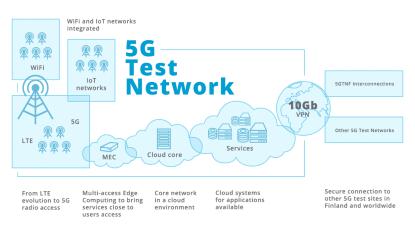
The network architecture uses 3GPP-specified evolved packet core elements and LTE radio access technology, with a special emphasis on small cell-based solutions. The 5GTN project team can also grant frequency licenses. It has a number of projects active at present including care, wellbeing and fitness, e-health at home, media production and distribution, and a Nokia automated factory using 5G.
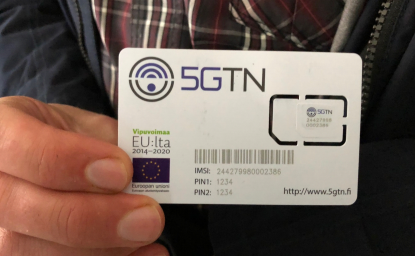
Reflections
It’s easy to be skeptical when someone talks about 6G when we know that there’s still a lot of work to be done on 5G. Mike Short, who spent 17 years at Telefonica and is now chief scientific advisor with the British government’s international trade body, said, “I think 6G is a red herring until it is really defined and not worth much effort before 2020 to 2022. We need to see real 5G customer demand and rollout first.”
However, there is work already going on in various aspects of next-generation networks around the world, and scientists and researchers are thinking about the challenges already because it is something that has to start at some point in time. For example, it is thought that China already started researching next-generation mobile communications, or 6G, at the end of last year. In addition, the ITU has a focus group looking at the backbone technologies for next-generation networks looking toward 2030. And the Semiconductor Research Corporation has a Center for Converged Terahertz Communications and Sensing looking at developing technologies for future cellular infrastructure using hubs with massive spatial multiplexing, providing 1 to 100 Gb/s to the end user, and with 100 to 1,000 simultaneous independently modulated beams and aggregate hub capacities in the tens of Tb/s.
Professor Pouttu of the University of Oulu said that it’s just human curiosity at work. “Find even better ways to do things,” he said. “Don’t worry about applications or business — there are other guys to do that. We are engineers; we are curious.”
— Nitin Dahad is a European correspondent for EE Times.
Subscribe to Newsletter
Test Qr code text s ss
